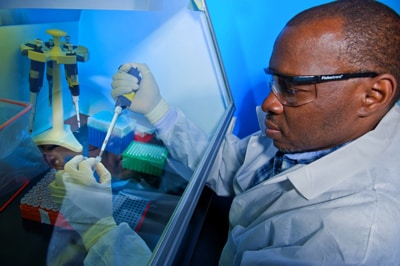
AMD: Battling HIV and STDs
Sexually transmitted diseases (STDs) have long been a formidable challenge for public health. CDC estimates that approximately 20 million new STD infections occur in the United States each year, and that more than 110 million total (new and existing) people are infected at any given time. These infections also are an economic drain on the U.S. healthcare system. Data suggest the direct cost of treating STDs in the United States is nearly $16 billion annually. Even more concerning, some STDs are becoming increasingly resistant to antimicrobials used to treat them. AMD technology has the potential to greatly advance our understanding of STDs, improve surveillance for antimicrobial resistance markers in pathogen DNA, inform vaccine development, and potentially change the diagnosis and treatment paradigm into customized treatment for individual patients.























.jpg)










No hay comentarios:
Publicar un comentario